 W
WAdamsite or DM is an organic compound; technically, an arsenical diphenylaminechlorarsine, that can be used as a riot control agent. DM belongs to the group of chemical warfare agents known as vomiting agents or sneeze gases. First synthesized in Germany by Heinrich Otto Wieland in 1915, it was independently developed by the US chemist Roger Adams at the University of Illinois in 1918.
 W
WCS-27349, or L-2-α-tropinyl benzilate, is an experimental incapacitating agent. It acts as an antagonist to muscarinic acetylcholine receptors, causing delirium. It has 37% of the potency of the related compound 3-quinuclidinyl benzilate (BZ) in producing peripheral effects, but 85% of the potency in producing central effects. The mean dose required to incapacitate subjects was 1.2 times that of BZ. It has not been in use since the 1970s, and there have been no publications about its effects or long-term toxicology since then.
 W
WThe M1 mortar is an American 81 millimeter caliber mortar. It was based on the French Brandt mortar. The M1 mortar was used from before World War II until the 1950s when it was replaced by the lighter and longer ranged M29 mortar.
 W
WThe M2 4.2-inch mortar was a U.S. rifled 4.2-inch (107 mm) mortar used during the Second World War and the Korean War. It entered service in 1943. It was nicknamed the "Goon Gun" or the "Four-Deuce". In 1951 it began to be phased out in favor of the M30 mortar of the same caliber.
 W
WThe M2 Mortar is a 60 millimeter smoothbore, muzzle-loading, high-angle-of-fire weapon used by U.S. forces in World War II, the Korean War, and the Vietnam War for light infantry support.
 W
WThe M10 smoke tank, also known as Smoke Curtain Installation, was an aircraft under wing tank used by the United States Army Air Forces to lay smoke screens or dispense chemical weapons such as tear gas. The tanks held a maximum of 30 US gallons (110 l), and weighed, when full 588 pounds (267 kg) and could lay a smoke screen about 2,000 feet (610 m) long.
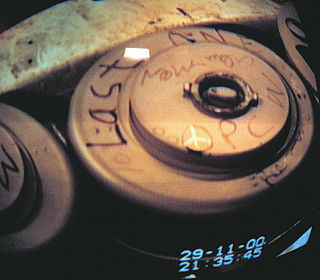 W
WThe M23 is a United States steel cased chemical landmine. The mine was developed in the late 1950s and early 1960s, and approximately 100,000 units were produced. The U.S. completed its destruction of its stock at the Umatilla Chemical Depot in 2008 and the Johnston Atoll Chemical Agent Disposal System in 2000.
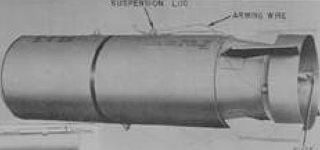 W
WThe M34 cluster bomb was the first mass-produced United States Army weapon meant to deliver the chemical agent sarin (GB). A large stockpile of M34s was destroyed between 1973 and 1976.
 W
WThe M43 BZ cluster bomb, or simply M43 cluster bomb, was a U.S. chemical cluster bomb intended to deliver the incapacitating agent known as BZ. The weapon was produced in the early 1960s and all stocks of U.S. BZ were destroyed by 1989.
 W
WThe M44 generator cluster was an American chemical cluster bomb designed to deliver the incapacitating agent BZ. It was first mass-produced in 1962 and all stocks of the weapons were destroyed by 1989.
 W
WThe M55 rocket was a chemical weapon developed by the United States in the 1950s. The United States Army produced both Sarin and VX unitary warheads for the M55.
 W
WThe M134 bomblet was a U.S. chemical sub-munition designed for use in the Honest John rocket during the 1950s. The weapon was never mass-produced and was supplanted in 1964 by an improved design, the M139.
 W
WThe M139 bomblet was an American sub-munition designed for use in warheads as a chemical cluster munition. Each spherical bomblet held 590 grams (1.3 lb) of sarin nerve agent.
 W
WThe M687 is an American 155 mm binary sarin chemical artillery shell. The design was standardized in 1976 and production began on December 16, 1987 at Pine Bluff Arsenal, Pine Bluff, Arkansas. Production was halted three years later, following the 1990 Chemical Weapons Accord between America and the USSR, and the dismantling of existing stocks began in November 1997 at Hawthorne Army Depot, Nevada. America's remaining stocks were stored at the Deseret Chemical Depot, Utah, and the Umatilla Chemical Depot.
 W
WThe MC-1 bomb was the first U.S. non-clustered air-dropped chemical munition. The 750-pound (340 kg) MC-1 was first produced in 1959 and carried the nerve agent sarin.
 W
WSarin is an extremely toxic synthetic organophosphorus compound. A colourless, odourless liquid, it is used as a chemical weapon due to its extreme potency as a nerve agent. Exposure is lethal even at very low concentrations, where death can occur within one to ten minutes after direct inhalation of a lethal dose, due to suffocation from respiratory paralysis, unless antidotes are quickly administered. People who absorb a non-lethal dose, but do not receive immediate medical treatment, may suffer permanent neurological damage.
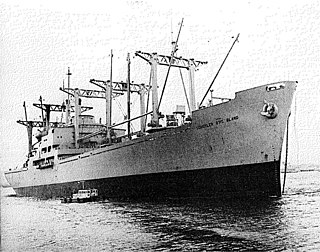 W
WUSNS Schuyler Otis Bland also known as SS Schuyler Otis Bland is the only ship of the series C3-S-DX1 (Freedom-class).
 W
WThe M3 Stuart, officially Light Tank, M3, was an American light tank of World War II. An improved version entered service as M5. It was supplied to British and other Commonwealth forces under lend-lease prior to the entry of the U.S. into the war. Thereafter, it was used by U.S. and Allied forces until the end of the war.
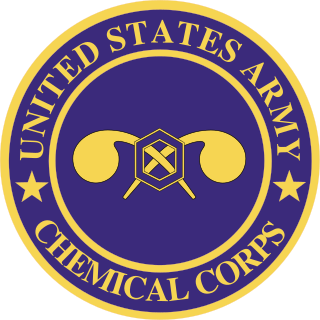 W
WThe Chemical Corps are the branch of the United States Army tasked with defending against chemical, biological, radiological, and nuclear (CBRN) weapons. The corps was founded as the U.S. Chemical Warfare Service (CWS) during World War I. Its name was changed to the Chemical Corps in 1946. For most of its history, the Chemical Corps was tasked with delivering chemical weapons rather than defending against them.
 W
WHerbicidal warfare research by the U.S. military began during the Second World War with additional research during the Korean War. Interest among military strategists waned before a budgetary increase allowed further research during the early Vietnam War. The U.S. research culminated in the U.S. military defoliation program during the Vietnam war known as Operation Ranch Hand.
 W
WVX is an extremely toxic synthetic chemical compound in the organophosphorus class, specifically, a thiophosphonate. In the class of nerve agents, it was developed for military use in chemical warfare after translation of earlier discoveries of organophosphate toxicity in pesticide research. In recent years, VX was found to be the agent used in the assassination of Kim Jong-nam. In its pure form, VX is an oily, relatively non-volatile, liquid that is amber-like in color. Because of its low volatility, VX persists in environments where it is dispersed.
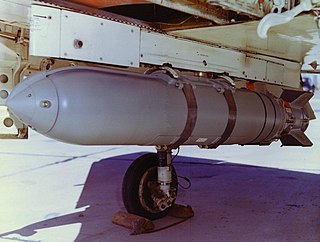 W
WThe Weteye bomb was a U.S. chemical weapon designed for the U.S. Navy and meant to deliver the nerve agent sarin. The Weteye held 160 kg (350 lb) of liquid sarin and was officially known as the Mk 116. Stockpiles of Weteyes were transferred to Utah in the 1980s amidst controversy and protest.